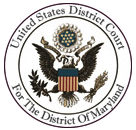Otterbein Church (Baltimore, Maryland)
18th-century Methodist church buildings in the United StatesAnabaptism in MarylandBaltimore City LandmarksChurches completed in 1785Churches in Baltimore ... and 7 more
Churches on the National Register of Historic Places in MarylandGeorgian architecture in MarylandGerman-American culture in BaltimoreHistoric American Buildings Survey in BaltimoreOtterbein, BaltimoreProperties of religious function on the National Register of Historic Places in BaltimoreUnited Methodist churches in Maryland

Otterbein Church, now known as Old Otterbein United Methodist Church, is a historic United Brethren church located in Baltimore, Maryland, United States. The first "German Reformed" church was built to serve the German Reformed and some Evangelical Lutheran immigrants, and later entered the Brethren strain of German Reformed Protestantism in the later Church of the United Brethren in Christ.
Excerpt from the Wikipedia article Otterbein Church (Baltimore, Maryland) (License: CC BY-SA 3.0, Authors, Images).Otterbein Church (Baltimore, Maryland)
West Conway Street, Baltimore
Geographical coordinates (GPS) Address External links Nearby Places Show on map
Geographical coordinates (GPS)
| Latitude | Longitude |
|---|---|
| N 39.284444444444 ° | E -76.617222222222 ° |
Address
Old Otterbein United Methodist Church
West Conway Street 112
21201 Baltimore
Maryland, United States
Open on Google Maps








